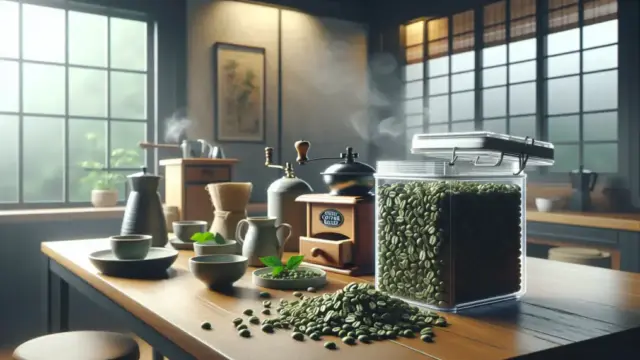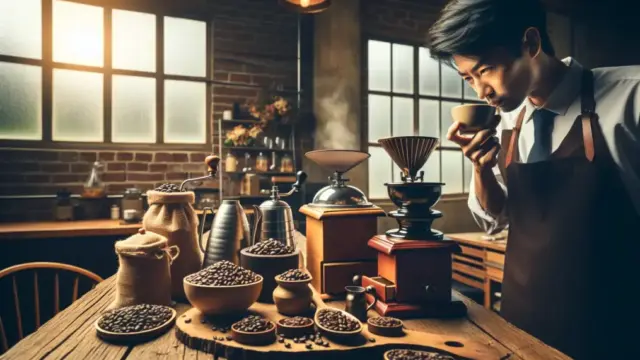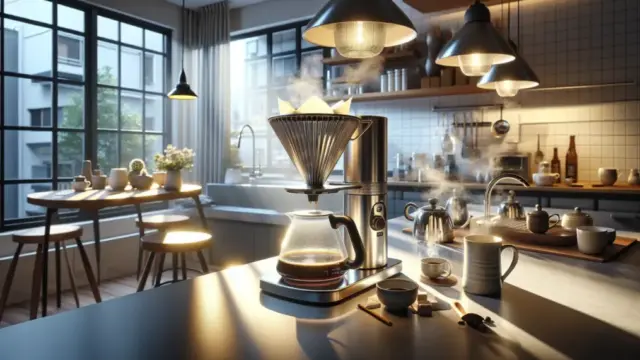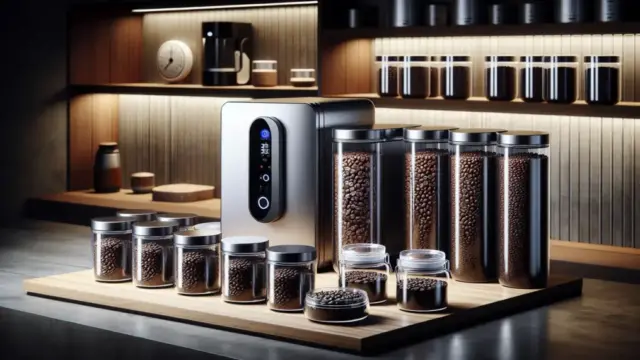Home roasting coffee is an exciting way to enrich your coffee life. By roasting fresh beans yourself, you can savor aromatic flavors and truly create your very own “home café” experience. One of the most enjoyable aspects of this process is crafting your unique blend.
In this article, we’ll cover everything from the basics of home roasting to tips on selecting the right beans and mastering the roasting process. Even if you’re new to coffee, our clear explanations will guide you as you explore the world of home roasting.
Use this article as your first step toward enjoying delicious coffee right at home.
- What fresh flavors can you achieve with home roasting?
- Tips for beginners on selecting the right beans
- Basic steps and tricks for successful roasting
The Allure of Home-Roasted Coffee
Home-roasting coffee is not just a convenient way to enjoy your daily brew; it’s an exciting method that allows you to savor fresh flavors tailored to your own preferences. By roasting beans at home, you can experience the delightful aroma and taste of freshly roasted coffee, turning your coffee break into something truly special. The variety of beans and roasting techniques available means that you can explore a rich spectrum of flavors that only home-roasting can offer.
Don’t forget the joy of creating your very own custom blend. By mixing different beans, you can get closer to your ideal flavor profile. In this section, we’ll delve into the fresh flavors that come with home-roasting and the fun of crafting a unique blend just for you.
Freshness at Its Best with Home-Roasting
The standout feature of home-roasting is undoubtedly its freshness. Freshly roasted beans boast a rich aroma and an exceptional flavor that you simply can’t find in store-bought coffee. You’ll discover deep richness and toasty notes that elevate your coffee experience. Plus, you have the freedom to choose the roasting level that best suits your taste, allowing you to pursue the flavors you love.
When you brew coffee immediately after roasting, you’re able to highlight the beans’ true characteristics, resulting in an extraordinary cup. The value of enjoying this fresh flavor makes home-roasting a worthwhile endeavor.
- Experience the unique freshness that only home-roasting can provide
- Choose your roasting level to match your personal taste
- Maximize the beans’ inherent flavors
The Joy of Crafting Your Own Blend
Another fantastic aspect of home-roasting is the fun of creating your own special blend. You can pursue original flavors that you won’t find in commercial coffees. By combining beans from different regions or experimenting with varying roasting levels, you can move closer to your ideal taste.
The process of crafting a blend that suits your preferences is almost an art form. The trial and error of testing flavors and aromas is one of the most enjoyable parts of home-roasting. By creating your own blend, you can broaden your appreciation of the coffee world.
As you explore the joys of home-roasting, you might be eager to learn tips to make your coffee even more delicious. If that’s the case, check out this article: “How to Enjoy Better Coffee at Home”. It’s packed with ideas for selecting and brewing beans that will enhance your daily coffee experience.
- The thrill of pursuing your original blend
- Discover new flavors by combining different beans
- Enjoy a personal and unique taste experience
Tips for Choosing Coffee Beans for Beginners
If you want to enjoy freshly roasted coffee at home, the first step is to choose the right beans for you. The selection of beans can greatly affect the flavor and aroma after roasting. For beginners, it’s crucial to understand the characteristics of roast levels and their origins. In this section, we’ll dive into key points to help those starting their home roasting journey.
The taste of coffee varies widely based on the roast level and the beans’ origin. To discover your personal preference, it’s a great idea to try out different beans and see which flavors resonate with you.
Choosing by Roast Level
The roast level has a significant impact on the coffee’s flavor. Generally, lighter roasts are more acidic, while darker roasts tend to be more bitter. Lightly roasted beans showcase a fruity flavor profile, whereas dark roasts offer a rich and full-bodied taste.
For beginners, starting with medium roast beans is a wise choice. Medium roasts strike a nice balance between acidity and bitterness, making them easy to enjoy. Experimenting with beans of varying roast levels can help you pinpoint your taste preferences.
- The lighter the roast, the higher the acidity
- The darker the roast, the more bitterness it has
- Medium roasts are easy to drink and recommended
Understanding Flavor Characteristics by Origin
Coffee beans vary in flavor and aroma depending on their origin. For instance, Ethiopian beans are known for their fruity and floral notes, while Colombian beans are celebrated for their balanced and approachable taste. Additionally, Brazilian beans often bring a nutty flavor to the table.
For beginners, it’s beneficial to start with beans from well-known origins. Gaining an understanding of the distinct characteristics of different regions will make it easier for you to find flavors that you enjoy.
- Ethiopian beans are fruity and floral
- Colombian beans have a well-balanced flavor
- Brazilian beans often have a nutty taste
The Basics of Home Coffee Roasting: Steps and Tips
To truly enjoy homemade coffee roasting, it’s essential to grasp the basic steps involved. By gathering the right equipment and making the necessary preparations, you can achieve better results in your roasting endeavors. There are also several important considerations during the roasting process that you’ll want to keep in mind. In this section, we’ll dive into the fundamental steps and tips for successful home roasting.
Starting your own coffee roasting journey may be easier than you think, but understanding how different tools and methods can affect flavor will make for a more enjoyable experience. So, let’s jump into the exciting world of home roasting!
Equipment and Preparation
To get started with home roasting, you’ll need a few key pieces of equipment. You can use a roasting machine, a frying pan, or even an oven for the roasting process. These tools are crucial for ensuring the beans roast evenly. Additionally, having a thermometer and a timer on hand can make it easier to manage the roasting process.
Next, choose the beans you’ll be roasting. Selecting fresh green coffee beans is the first step toward enjoying a great cup of coffee. You can find these beans at specialty stores or online, so take the time to discover the ones you like best.
- Roasting machine, frying pan, or oven needed
- A thermometer and timer are handy
- Choosing fresh green beans is crucial
The Roasting Process and Key Considerations
The roasting process begins by placing the beans in your chosen equipment and heating them over medium heat. As the beans gradually change color, keep an eye on their appearance and aroma. As roasting progresses, the beans will swell and you may hear a change in sound—this is known as the “first crack.” Be sure not to miss this crucial moment.
During roasting, it’s essential to avoid burning the beans. Once roasting is complete, cool the beans immediately and store them in an airtight container to preserve their flavor. This way, you can enjoy the fresh taste of your roasted coffee for longer.
The type of beans you choose plays a significant role in your home roasting experience. By understanding the characteristics of different beans, you can maximize the effects of your roasting technique. If you’re interested, I also recommend checking out this guide on Choosing Coffee Beans for Beginners. It provides detailed insights to help you find your perfect cup of coffee.
- Heat the beans over medium heat while observing color and aroma
- Pay attention to the “first crack”
- Cool the beans immediately after roasting and store in an airtight container
Tips for Unlocking Flavor
When it comes to enjoying freshly roasted coffee, how you store your beans and brew them plays a crucial role. Even the best beans can lose their delightful flavor if they aren’t stored properly or if the brewing method isn’t thoughtfully chosen. In this section, we’ll delve into the best ways to store your beans after roasting and how different brewing techniques can alter the taste of your coffee.
By understanding the right storage methods and brewing techniques, you can truly elevate your home-roasted coffee experience. Let’s explore some key points to help you enjoy a more delicious cup.
Storing Your Beans After Roasting
Freshly roasted beans are bursting with flavor, but over time, they can oxidize and lose their distinctive taste. It’s essential to store them properly as soon as possible after roasting. First, make sure to cool your beans before transferring them to an airtight container. Ideally, you should keep them in a cool, dark place to protect them from light and moisture.
For optimal freshness, it’s recommended to store your beans in small quantities. By only taking out what you need, you can keep the remainder sealed and preserve their flavor for longer. Aim to consume your coffee within a week of roasting to enjoy it at its peak taste.
- Transfer to an airtight container promptly after roasting
- Store in a cool, dark place to avoid light and moisture
- Take out only what you need and keep the rest sealed
The Impact of Brewing Method on Flavor
How you brew your coffee can significantly affect its overall flavor. Even with the same beans, different methods can yield varied taste profiles. Whether you’re using a pour-over, French press, or espresso machine, it’s important to understand the unique characteristics of each method.
Key factors in brewing include the grind size of your beans, water temperature, and extraction time. Coarse grinds can produce a lighter flavor, while fine grinds lead to a richer taste. The ideal water temperature is typically between 90 to 95°C (194 to 203°F), but feel free to adjust this based on your personal preference. Finding a brewing method that suits your taste will enhance your coffee enjoyment even further.
- Brewing method affects the flavor profile
- Grind size, water temperature, and extraction time are key factors
- It’s essential to discover a brewing style that matches your taste
Conclusion
Home-roasted coffee is a fantastic way to enjoy fresh coffee right in your own kitchen. By roasting your beans, you can bring out the flavors and aromas that suit your personal taste, creating a truly special coffee experience. Each step of the process—from selecting the beans and roasting them to storing and brewing—plays a crucial role in determining the final flavor, so it’s essential to understand each aspect thoroughly.
The joy of crafting your own unique blends, figuring out the best ways to store your freshly roasted beans, and experimenting with different brewing techniques all enhance the allure of home-roasted coffee. Keep these points in mind, and dive into your coffee journey at home!
- Enjoy fresh coffee through home roasting
- Bean selection, roasting, storage, and brewing all affect flavor
- Experience the fun of creating your own unique blend
Home-roasted coffee can greatly enrich your coffee life. We’d love to hear your thoughts and questions, so feel free to share them in the comments!











































































Comment